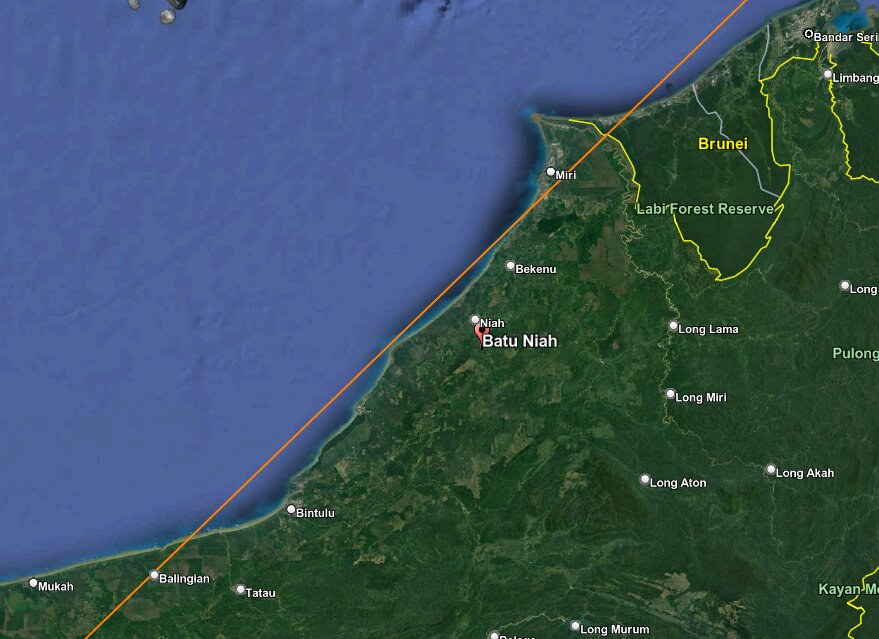
Astronomer commenting on space launches. Orbital Police. Personal account. All plots CC-BY. @planet4589 on Ma, bsky, etc.
5 subscribers
How to get URL link on X (Twitter) App



 It is possible that the second stage could shut down early, or that the yaw manuever prior to stage 2 ignition could go off course, so it is not completely *impossible* for debris from the launch to hit the Okinawa region. But it is very, very unlikely.
It is possible that the second stage could shut down early, or that the yaw manuever prior to stage 2 ignition could go off course, so it is not completely *impossible* for debris from the launch to hit the Okinawa region. But it is very, very unlikely.

 @martyn_williams I think the first and second warning areas correspond to first stage and nose fairing impact zones, and correspond to a -5650 x 150 km x 93.9 deg (sub)orbit (apogee not well constrained).
@martyn_williams I think the first and second warning areas correspond to first stage and nose fairing impact zones, and correspond to a -5650 x 150 km x 93.9 deg (sub)orbit (apogee not well constrained).








 The data are the white wiggly line which show the amout of light at each precise color. There are particular spikes where there's more lightm for example the one marked 'hydrogen' at 4.61 or so.
The data are the white wiggly line which show the amout of light at each precise color. There are particular spikes where there's more lightm for example the one marked 'hydrogen' at 4.61 or so.
https://twitter.com/NASAWebb/status/1545413807996129280WASP-96b is a planet orbiting the 12th magnitude G8 star 2MASS 00041112-4721382, in the constellation Phoenicis
https://twitter.com/18thSDS/status/1521519056578224130The SOZ motors were part of the Blok DM type upper stage that was used on Proton rockets until recently. The DM makes two burns to deliver the payload to its final orbit, in this case a 19130 x 19130 km x 64.8 deg orbit used by GLONASS; (cont)
